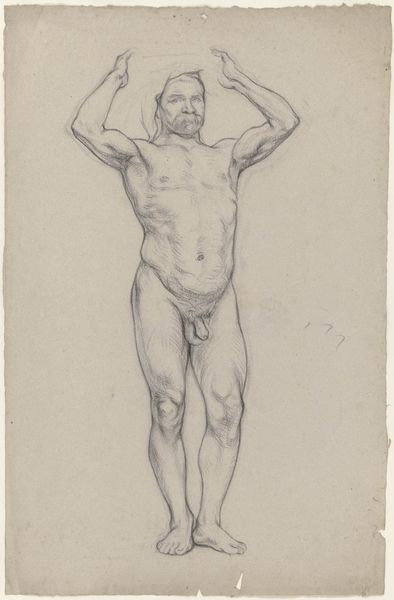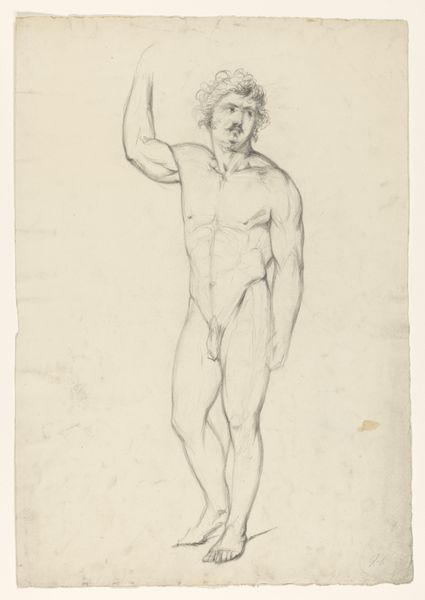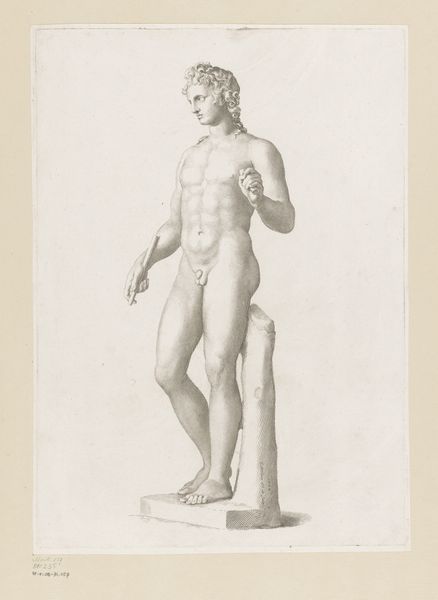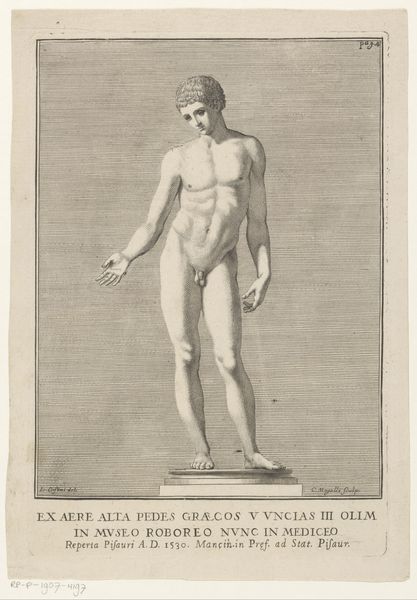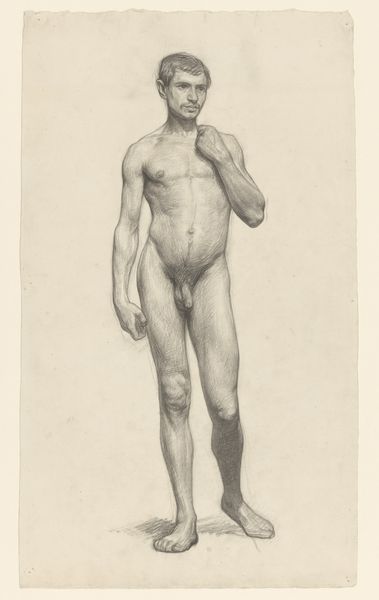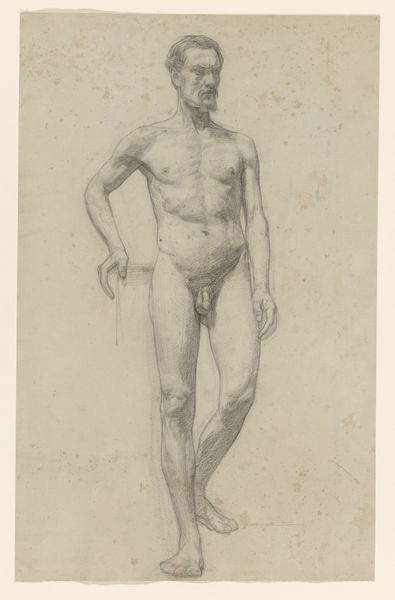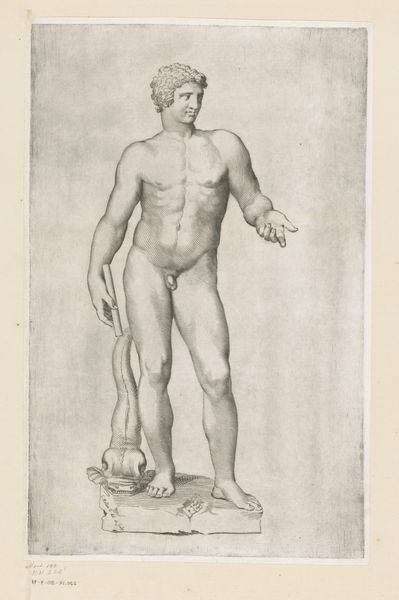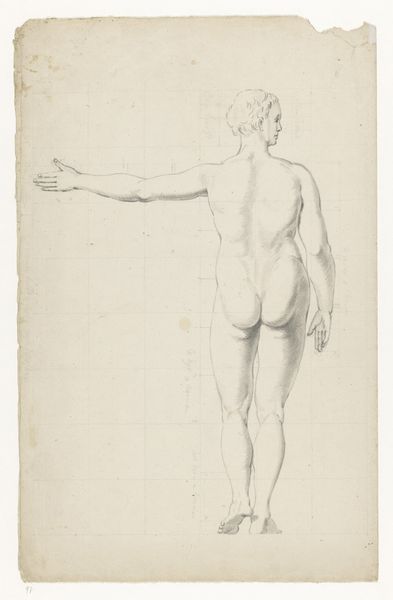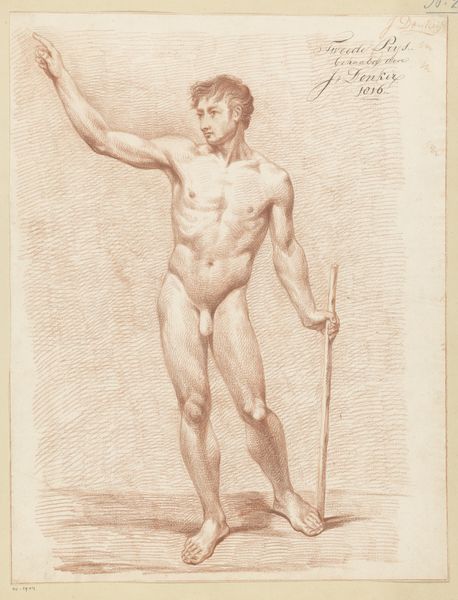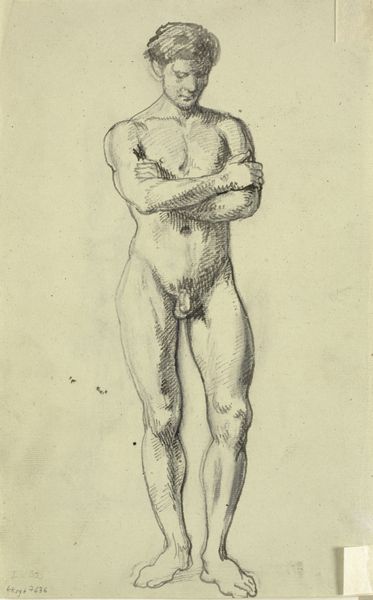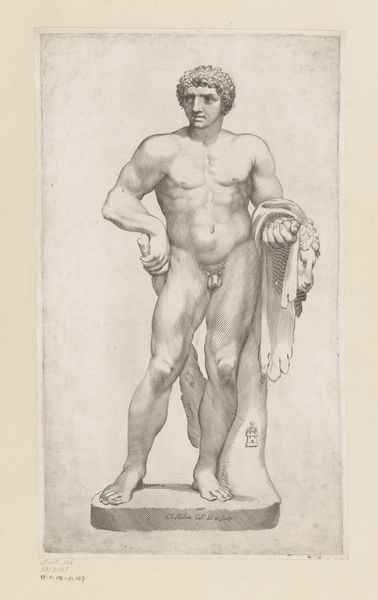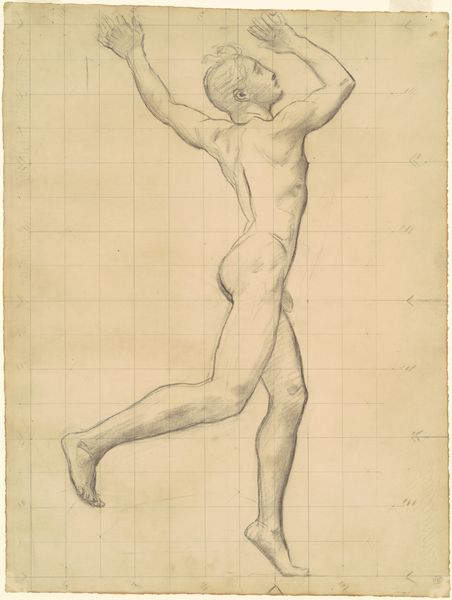
drawing, pencil
#
portrait
#
pencil drawn
#
drawing
#
classical-realism
#
figuration
#
pencil drawing
#
pencil
#
portrait drawing
#
academic-art
Dimensions: sheet: 63.18 × 48.58 cm (24 7/8 × 19 1/8 in.)
Copyright: National Gallery of Art: CC0 1.0
Editor: So here we have John Singer Sargent's "Study of Apollo for 'Apollo and the Muses,'" created around 1921, a pencil drawing. The grid underneath the figure suggests the labor involved, and the classicism hints at traditional techniques. What catches your eye, from your perspective? Curator: Well, that grid is precisely what grabs me! We often overlook the underdrawing, the scaffolding that supports the image. It's graphite on paper, a very common and relatively cheap material, but look how Sargent deploys it. Editor: So you're saying the focus isn't just on the figure, but how he got there? Curator: Exactly! Consider the labor: hours, maybe days, spent mapping, correcting, and refining. The finished mural aims to create an illusion, a sort of seamless classical world. But here, in the study, we see the artist's *work*, the means by which he constructs that illusion. The grid, that underpinning, highlights the distance between artistic labor and divine representation. Editor: That's interesting! So, instead of seeing Apollo as this purely idealized form, we see him as a *product* of specific materials and labor? Curator: Precisely! Think about the consumption, too. Who was this *for*? A preparatory study like this would be intended for fellow artisans, assistants perhaps. The grid itself could represent a challenge to conventional perspectives of skill, exposing this ‘god’ as merely the creation of meticulous, material-based effort. Does it change how you see it? Editor: Absolutely! I initially saw it as a straightforward classical study. But now, considering the grid and material, I recognize it’s a record of production itself. I will always see Sargent, the technician, not just Sargent, the genius, going forward. Curator: Indeed! Hopefully, we can approach many artistic artifacts this way going forward and better appreciate their intrinsic complexities.
Comments
No comments
Be the first to comment and join the conversation on the ultimate creative platform.
